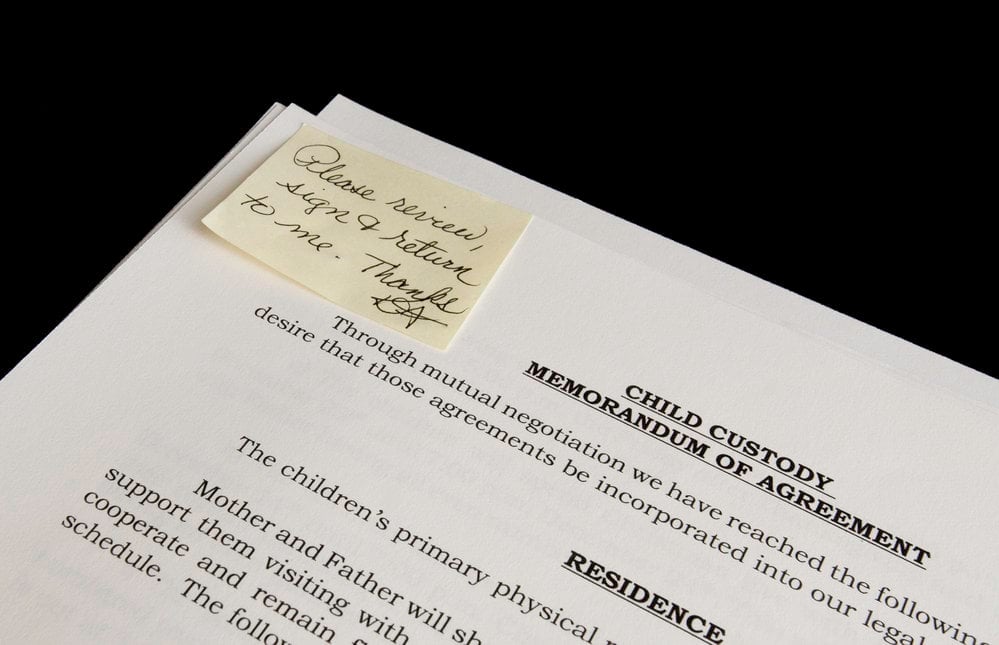Navigating the complex world of divorce can be daunting for many individuals, especially when legal representation seems financially out of reach. For some people, representing themselves in a divorce called pro se divorce, may be the best option. A pro se divorce allows individuals to act on their behalf in legal proceedings, potentially saving substantial amounts of money and simplifying the process.
However, choosing to embark on a pro se divorce is not for everyone. It requires an understanding of court procedures and applicable law. For this reason, couples considering this method should familiarize themselves with the basics of family law and the specific divorce laws in their jurisdiction. Moreover, effective communication and negotiation skills will be essential for settling matters such as property division and child custody arrangements.
Though pro se divorce may not be suitable for all situations, it offers a valuable alternative for those willing to invest the necessary time and effort to educate themselves on the intricacies of the legal process. In cases where both parties are amicable and have relatively uncomplicated assets, a pro se divorce can be an efficient and less costly method of ending a marriage.
Understanding Pro Se Divorce
Pro Se Litigant
A pro se litigant is an individual who chooses to represent themselves in a legal proceeding, including a divorce, without the assistance of an attorney. This option can save time and money but can be complex and challenging for those unfamiliar with legal processes.
When considering a pro se divorce, it’s important to be well-informed and clearly understand the divorce process. This includes knowing the legal requirements and the necessary steps to file for divorce.
Pro Se Divorce Handbook
A pro se divorce handbook is useful for anyone considering proceeding with a divorce without legal representation. This handbook typically provides an overview of the divorce process, step-by-step instructions, and necessary forms to file for divorce.
While there is no substitute for professional legal advice, a comprehensive pro se divorce handbook can help individuals familiarize themselves with the process and be better prepared to navigate legal challenges independently. Some handbooks may also include helpful tips on drafting legal documents, guidelines on property division, and explanations of child custody and support laws.
It’s important to note that pro se divorce may not suit everyone, particularly in cases involving complex legal issues, high conflict between the parties, or significant assets. In these situations, hiring an attorney is strongly recommended.
To proceed with a pro se divorce, individuals should carefully review the pro se divorce handbook, gather all necessary documentation, and ensure they understand their rights and responsibilities throughout the process. In many jurisdictions, local courts may also offer self-help centers or resources for pro se litigants to assist in properly filing and completing the divorce process.
In conclusion, while pro se divorce can be a financially and time-efficient option for some individuals, it is important to thoroughly understand the process and consider potential challenges before proceeding without legal representation. Utilizing a pro se divorce handbook and local court resources can help individuals confidently navigate this process.
Divorce Process
Filing for Divorce
The initial step in a pro se divorce is filing for divorce. The petitioner seeking a divorce must prepare and submit divorce papers to the local court. These documents include the petition for dissolution of marriage, which outlines the grounds for divorce, and other required legal forms. Often, the petitioner must provide information about the couple’s assets, debts, children, and any desired custody arrangements.
Service of Process
Once the divorce papers are filed, the respondent, the other spouse, must be served with the documents. The service of the process involves delivering copies of the divorce papers to the respondent, typically by a sheriff or process server. The respondent can review the papers and file a response or answer, addressing any disagreements or requests for changes.
Contested vs. Uncontested Divorce
A pro se divorce can be either contested or uncontested. An uncontested divorce occurs when the parties agree on all terms, including property division, child custody, and support. In contrast, a contested divorce arises when the parties have one or more disputes regarding the divorce terms. A contested divorce typically takes longer and may require more court proceedings to resolve disagreements.
Mediation
Mediation may be recommended or required in some situations, particularly contested divorces. Mediation is an alternative dispute resolution technique where a neutral third party, the mediator, helps the couple agree on the contested issues. Mediation can be beneficial in helping parties avoid prolonged litigation and reach a mutually satisfactory resolution.
Hearing
If the parties reach an agreement or resolve their disagreements through mediation, a hearing may not be necessary. However, the court may schedule a hearing if the parties cannot agree. The petitioner and the respondent present their cases at the hearing before a judge. The judge considers the evidence, listens to the arguments, and decides the divorce terms.

Final Decree
Ultimately, the court issues a final divorce decree, which legally dissolves the marriage and sets forth the terms agreed upon or determined by the judge. These terms may include property division, child custody, visitation, and support. Both parties are legally bound to the terms of the final decree and must abide by them.
Children and Custody Issues
Child Custody
When dealing with a pro se divorce, one of the primary concerns is addressing child custody arrangements. It is crucial to establish who will be the primary caregiver for the children and how decision-making will be shared between both parents. In most cases, courts lean toward joint custody, allowing both parents to participate in raising their children.
Factors that can influence child custody decisions include:
- Parent’s ability to meet the child’s needs
- Stability of the parent’s home environment
- Parent’s willingness to cooperate and communicate
- Child’s preferences (if of appropriate age and maturity)
Visitation
Visitation is the time between the non-custodial parent and the child(ren). It is essential to draft a clear visitation schedule, ensuring each parent is granted time with their children. This schedule should consider special occasions, holidays, and vacations while remaining flexible to accommodate unforeseen circumstances.
Remember that visitation arrangements can be modified if both parents agree in writing or if a significant change in circumstances can affect the child’s best interest.
Child Support
Child support is designed to ensure that the children’s financial needs are met by both parents, even if they are not living together. Typically, the non-custodial parent must pay child support in the form of a monthly payment to the custodial parent.
Child support calculations vary by state jurisdiction and are based on factors such as:
- Parents’ incomes
- Number of children involved
- Children’s needs (educational, medical, extracurricular)
- Parenting time and expenses
- Cost of living adjustments
It is important to keep accurate records of child support payments and request modifications through the court when circumstances change (e.g., income fluctuations or changes in parenting arrangements).
Property and Financial Matters
Community Property
In a pro se divorce, it is important to address community property. This refers to assets acquired during the marriage, including income, real estate, and personal property. Some jurisdictions follow community property laws, while others utilize equitable distribution rules. Determining property classification as community or separate is crucial for proper division.
Division of Assets
Each party’s separate property is typically maintained when dividing assets in a pro se divorce. Separate property includes assets owned before the marriage, gifts received individually, or inheritances. The remaining community property is divided, aiming for a fair and equitable distribution. Factors such as the length of the marriage, each spouse’s financial situation, and contributions to the marital property may impact asset distribution.
Debts
Like assets, debts accumulated during the marriage are considered community debts and should be divided fairly. This may include credit card debt, mortgages, and personal loans. Each party may be responsible for their separate debts accrued before the marriage. Identifying and allocating debts is essential in a pro se divorce, ensuring financial obligations are equitably distributed.
Spousal Support
Spousal support, also known as alimony, may be awarded to one party depending on various factors like the need for financial assistance, the ability of the other party to pay, and the duration of the marriage. It is not automatically granted in a pro se divorce; it must be specifically requested and agreed upon by both parties. Spousal support is designed to help the lower-earning spouse maintain a similar standard of living post-divorce and is typically a temporary arrangement until they become self-sufficient.

Expectations
Potential Challenges
When pursuing a pro se divorce, individuals should be aware of their potential challenges. These include:
- Navigating complex legal procedures: Without legal representation, parties must handle all paperwork, filings, and court proceedings independently.
- Time investment: Managing a pro se divorce can be time-consuming, requiring understanding and adhering to various legal processes.
- Emotional strain: Divorce can be emotionally draining, and managing the process without assistance may add to the stress.
Costs
One of the main reasons people may choose a pro se divorce is to save on costs. However, they should be aware of the following expenses:
| Cost Component | Description |
|---|---|
| Court fees | These are mandatory fees required for filing and processing divorce papers. |
| Document preparation | Some individuals may hire a professional to prepare their divorce documents, which can incur additional costs. |
| Mediation services | In some cases, parties may require the services of a mediator to help reach agreements on issues such as child custody and support. |
While representing oneself in a divorce can save money initially, individuals need to understand the potential challenges and costs associated with the process.
Legal Assistance
Online Divorce Services
Several online divorce services are available for individuals seeking a pro se divorce. These platforms can provide the necessary paperwork and assistance in navigating the divorce process. Some services even offer access to legal advice from attorneys. Researching and choosing a reputable online divorce service is important to ensure access to accurate, up-to-date legal documents and support.
Hiring an Attorney
Although pro se divorce implies that one represents oneself in a divorce proceeding, seeking legal assistance is not uncommon. Hiring an attorney can help you understand legal terms, court representation, and state-specific laws. Some individuals may choose to hire an attorney for consultations while still handling most of the divorce process.
State Law Library
The state law library is a valuable resource for individuals pursuing a pro se divorce. It can provide access to legal resources, statutes, and forms necessary for filing a pro se divorce. Libraries may also offer workshops or clinics to help guide individuals. Becoming familiar with the specific divorce laws within one’s state is essential.
Legal Assistance Programs
Several legal assistance programs are available to those requiring additional support during a pro se divorce process. These programs often offer free or low-cost legal services, such as:
- Legal Aid organizations that assist those who are unable to afford legal representation
- Pro bono programs, where attorneys volunteer their time to provide legal advice or representation
- Non-profit organizations that focus on offering support and resources to specific groups or communities
It’s important to research and utilizes available legal assistance programs in one’s area to ensure the most comprehensive understanding and guidance during the pro se divorce process.
Frequently Asked Questions
What is a pro se divorce?
A pro se divorce is a divorce in which one or both spouses choose to represent themselves in court without the assistance of an attorney. This option can be cost-effective for individuals who cannot afford a lawyer or wish to handle their divorce proceedings independently.
What are the benefits of a pro se divorce?
- Cost savings: By representing themselves in court, individuals can avoid the expenses of hiring an attorney.
- Control: A pro se divorce allows individuals to have greater control over their divorce proceedings, as they can make decisions and negotiate terms without relying on representation from an attorney.
What are the challenges of a pro se divorce?
- Complexity: Navigating the legal system and understanding divorce laws can be challenging for individuals without a background in law.
- Time-consuming: Representing oneself in court can be time-consuming, as individuals must spend time researching and preparing their case.
- Emotional stress: Divorces can be emotional and stressful, and handling the legal aspects of a divorce without legal support can exacerbate these feelings.
Are there resources available for individuals pursuing a pro se divorce?
Yes, various resources are available for individuals pursuing a pro se divorce. These may include:
- Court websites: Many court websites offer information on divorce procedures, required forms, and guidance on the pro se divorce process.
- Legal aid offices: Legal aid offices can provide low-cost or free legal assistance to individuals unable to afford an attorney.
- Self-help books and online resources: Numerous books and online resources are dedicated to helping individuals navigate the pro se divorce process.
Do all states allow pro se divorces?
Yes, all states in the United States allow pro se divorces. However, the specific rules and procedures surrounding pro se divorces may vary by state, so individuals must research the laws and requirements in their jurisdiction before proceeding with a pro se divorce.
What are the steps in a pro se divorce?
- Research the divorce laws and procedures in your jurisdiction.
- Prepare and file the necessary court documents, including the divorce petition.
- Serve your spouse with the divorce papers, following local rules for service.
- Attend any required court-ordered mediation or parenting classes, if applicable.
- Represent yourself at court hearings and negotiate with your spouse or attorney, if necessary.
- Complete and submit any forms required by the court to finalize the divorce.
What are the potential drawbacks of a pro se divorce?
- Limited knowledge of legal procedures and court rules can lead to errors and delays.
- Difficulty navigating complex legal issues, such as property division and alimony.
- Emotional strain and potential conflict with spouses during negotiations.
- Higher likelihood of unfavorable outcomes compared to hiring an attorney.
Are there resources available to assist with a pro se divorce?
Yes, there are resources available to help with a pro se divorce, including:
- Local law libraries, which offer access to legal resources and research materials.
- Online legal forms and document preparation services.
- Law school clinics and volunteer attorney programs may provide limited legal assistance.
- Self-help books and online resources covering various divorce-related topics.
However, these resources may not completely replace the need for professional legal advice in complex cases or contentious situations.



